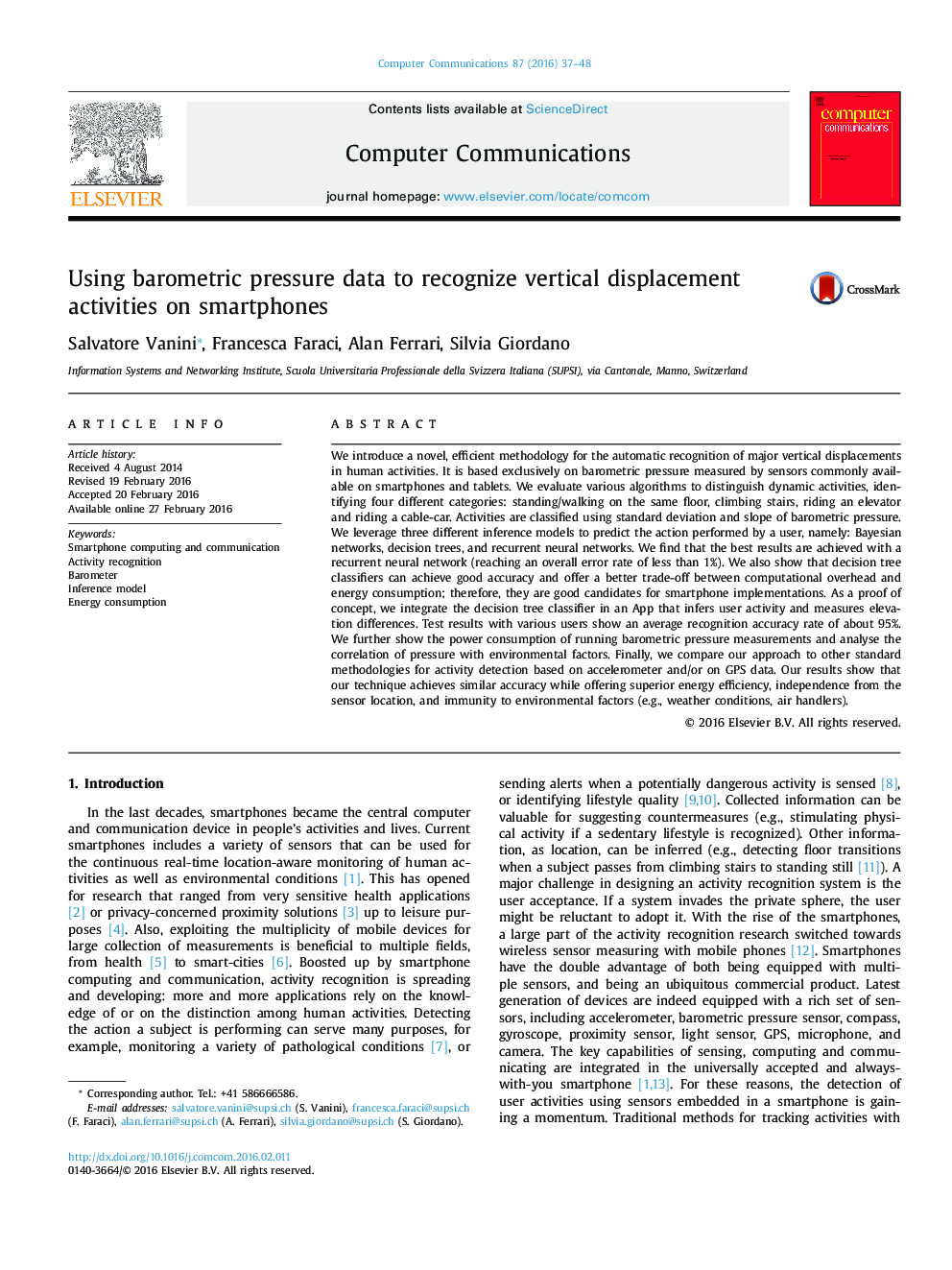| Article ID | Journal | Published Year | Pages | File Type |
|---|---|---|---|---|
| 448049 | Computer Communications | 2016 | 12 Pages |
•A method for detecting major vertical displacements in human activities is proposed.•Prediction is based on barometers available on smartphones and inference models.•Decision trees are a good choice for their high accuracy and low energy consumption.•Barometers offer high accuracy, energy efficiency and independence from position.
We introduce a novel, efficient methodology for the automatic recognition of major vertical displacements in human activities. It is based exclusively on barometric pressure measured by sensors commonly available on smartphones and tablets. We evaluate various algorithms to distinguish dynamic activities, identifying four different categories: standing/walking on the same floor, climbing stairs, riding an elevator and riding a cable-car. Activities are classified using standard deviation and slope of barometric pressure. We leverage three different inference models to predict the action performed by a user, namely: Bayesian networks, decision trees, and recurrent neural networks. We find that the best results are achieved with a recurrent neural network (reaching an overall error rate of less than 1%). We also show that decision tree classifiers can achieve good accuracy and offer a better trade-off between computational overhead and energy consumption; therefore, they are good candidates for smartphone implementations. As a proof of concept, we integrate the decision tree classifier in an App that infers user activity and measures elevation differences. Test results with various users show an average recognition accuracy rate of about 95%. We further show the power consumption of running barometric pressure measurements and analyse the correlation of pressure with environmental factors. Finally, we compare our approach to other standard methodologies for activity detection based on accelerometer and/or on GPS data. Our results show that our technique achieves similar accuracy while offering superior energy efficiency, independence from the sensor location, and immunity to environmental factors (e.g., weather conditions, air handlers).
